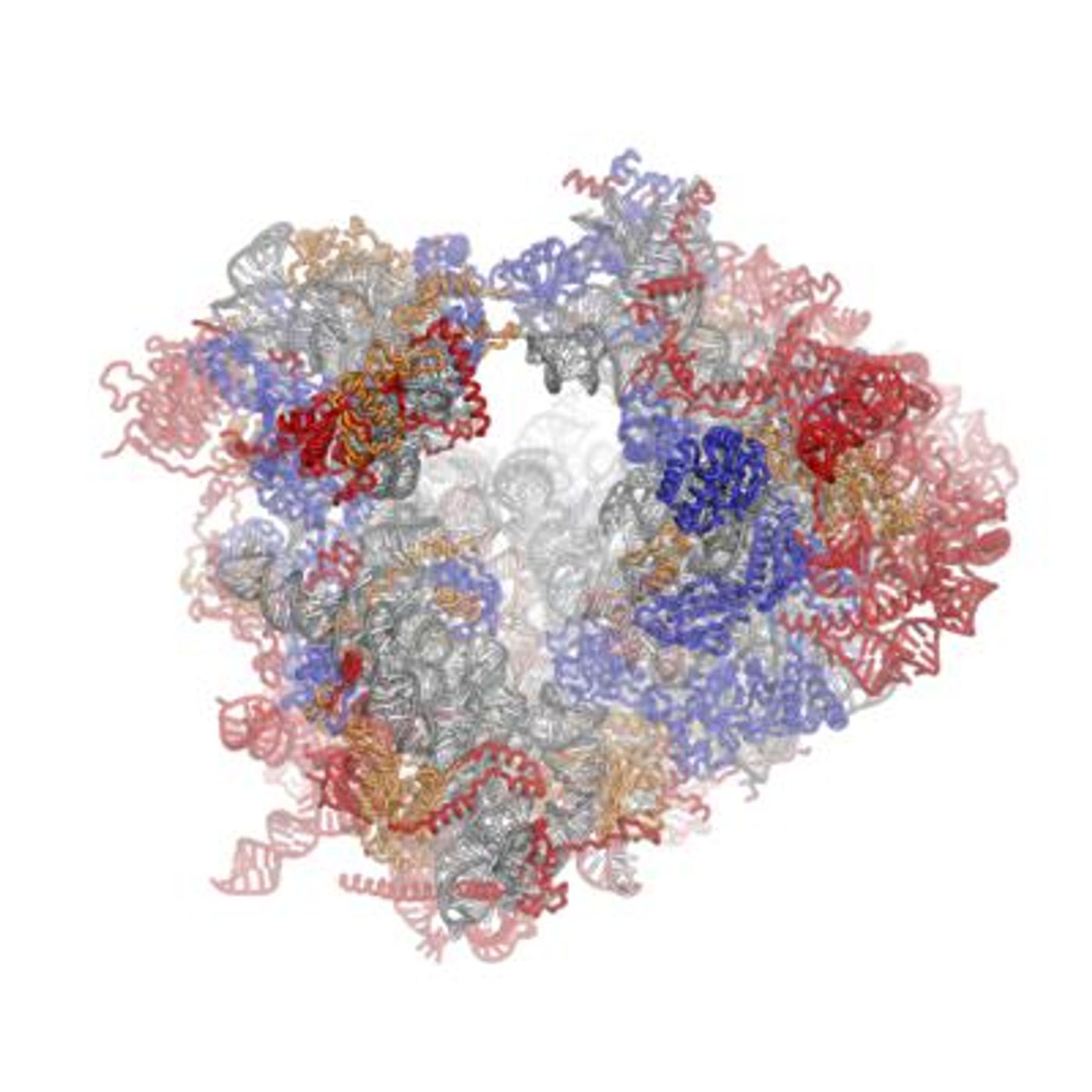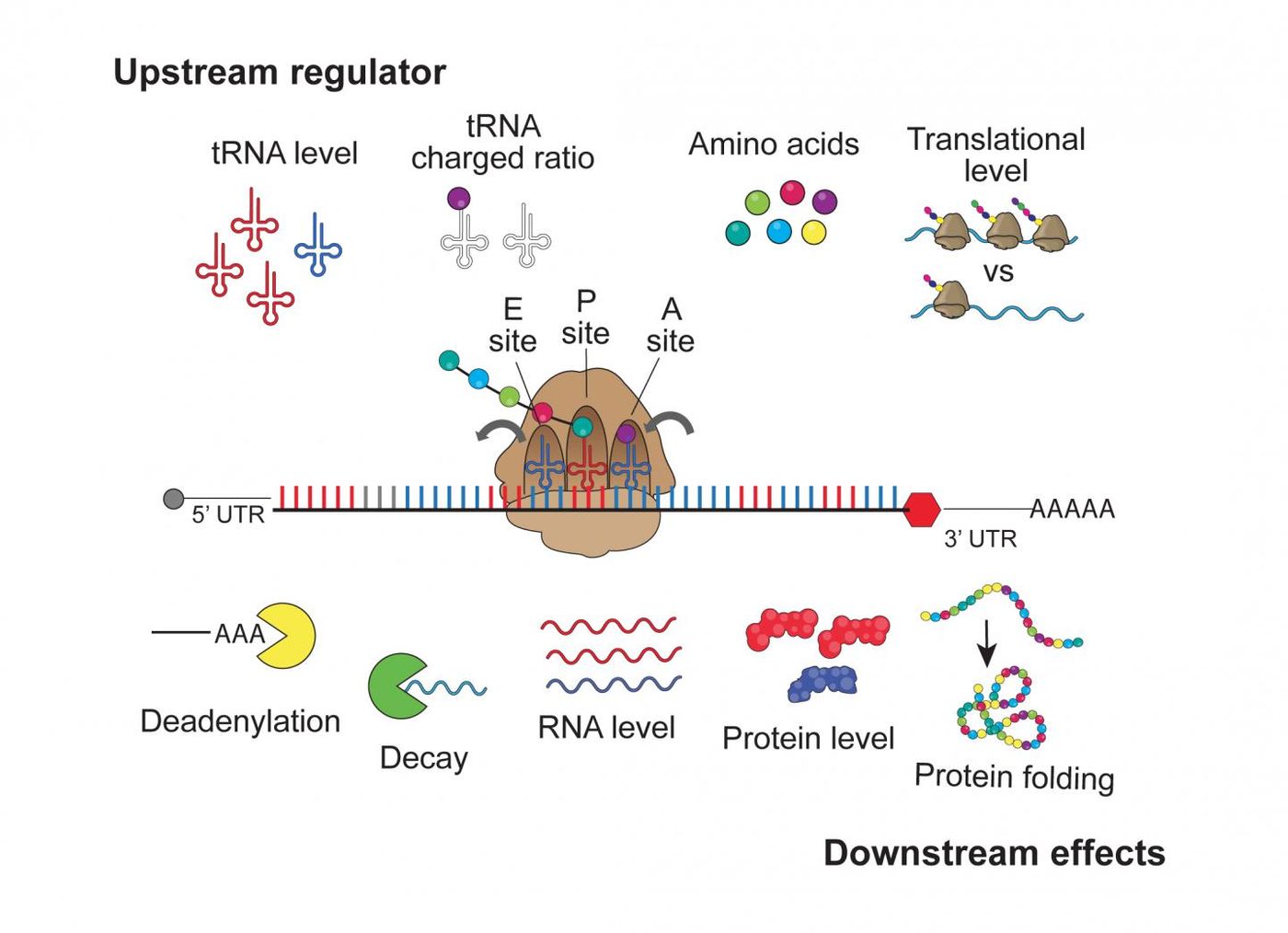Revealing a Previously Unknown Role for the Ribosome
Animals, plants, and fungi are eukaryotes, and in eukaryotic cells, the genetic material is held in the nucleus, and structures called organelles perform various tasks. One type of organelle is a ribosome, which has long been known as the protein factory of the cell, interpreting the messages RNA carries from DNA, and translating them into proteins. But now researchers have revealed a previously unknown function for the ribosome; it appears to also play a role in destroying messenger RNA (mRNA) and as such, helps regulate the expression of genes. The findings have been reported in eLife.
"For a long time, many people have viewed ribosomes as a passive player in the cell - a molecular machine that's just producing proteins," said Ariel Bazzini, Ph.D., an Assistant Investigator at the Stowers Institute for Medical Research. "Now there's growing evidence that ribosomes regulate gene expression, including in human cells."
The genome is made of nucleotide bases, and the sequence is read in sets of three bases, called a codon; each codon codes for one amino acid. The ribosome reads the codons, translating them into a string of amino acids that is eventually folded into a protein by another organelle. The ribosome can also destroy mRNA when it’s not constructed correctly.
Recent work in yeast, zebrafish and bacteria models has suggested that ribosomes can also influence the stability of mRNAs that are processed correctly, and would thus influence the level of mRNA. That, in turn, would affect the level of protein that is produced, showing that ribosomes impact gene expression. In this work, the scientists used human cells to replicate these observations.
"We're seeing that the amount of gene expression is a combination of mRNA production (transcription) and stability. Think of a glass of water; to get an idea of how much water the glass holds at any particular time, it's important to know how much water you initially pour into the glass but also important to know how much water you drink. The same is true with mRNAs," explained Bazzini. "You can measure how many mRNAs are properly made, but if you don't know how many of them are being broken down, how do you really know how many there are?"
Ribosomes may not be just simple factories that robotically churn out proteins. More work will be required to see how exactly they are involved in triggering mRNA destruction, noted Bazzini. This research also opens up the possibility that these mechanisms influence health and disease. Silent mutations, in which the sequence of a gene changes without impacting the resulting protein, may be detectable by ribosomes and could trigger the destruction of the otherwise normal mRNA, for example.
"One of the most basic concepts of biology is how genes are regulated and how those regulations drive cells to become specialized. We're interested in studying how post-transcription mechanisms work and, in particular, how ribosomes trigger mRNA destruction - how they trigger or recruit factors to carry out this process," Bazzini added. "Understanding how translation affects mRNA expression at a molecular level allows us to start thinking about how mRNA translation might shape gene expression in cancer, aging, or viral infection."
Learn more about how the work of Nobel laureate Venki Ramakrishnan on the ribosome from the video.
Sources: AAAS/Eurekalert! via Stowers Institute, eLife










